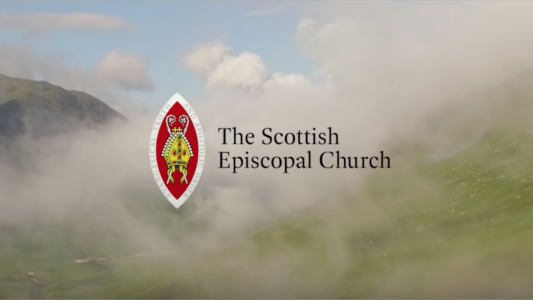- Introduction
- Personnel Policies
- Continuing Ministerial Development
- Remuneration, Housing and Expenses
- Retirement
The information contained in this section of the website replaces the former Clergy Personnel Handbook and is for clergy serving in the Scottish Episcopal Church. Much of its content applies specifically to this in stipendiary ministry but some parts are equally applicable to those serving in a self-supporting or non-stipendiary role.
These materials must be read in conjunction with the Code of Canons of the Scottish Episcopal Church and the Digest of Resolutions of the General Synod available at: https://www.scotland.anglican.org/who-we-are/publications/code-of-canons/.
The Canons of the Church are the ultimate authority for the matters contained in this publication and while every effort has been made to ensure consistency between them, in the event of conflict, the Canons take precedence. The general provisions of the law of Scotland also apply where relevant.
Employment Status
Most clergy are not “employees” in the technical sense of that word. An “employee” is a person who has a contract of employment. The relationship established by that legal obligation, in general terms, entitles the employer to service from the employee in exchange for which the employee is customarily remunerated. Legislation also affords certain benefits to those classified as employees, the best known of which are remedies for unfair dismissal and the right to a payment in the event of redundancy.
For the limited purposes of income tax and National Insurance contributions, clergy are treated as employees. Otherwise, however, the law considers them not to be employees but rather holders of an office. The defining characteristic of an office-holder is that the rights and duties are defined by the office, which exists independently of the person who fills it. This contrasts with the rights and duties of a “worker”, which are defined in a contract between the worker and the employer. Whilst the clergy enjoy various forms of authorisation (depending on their status), these do not constitute contracts of employment. Further information regarding the forms of clergy authorisation is given below. In a small minority of cases clergy may be treated as employees (most usually clergy involved in “sector ministries”).
The fact, therefore, that clergy are generally to be regarded as office holders, leads to certain consequences in relation to the handling of personnel matters, including the fact that terms such as “contracts of employment”, “offers of employment” and “job descriptions” are not appropriate.
Categories of Clergy and Clergy Authorisation
Canon 1 of the Code of Canons of the Scottish Episcopal Church “retains inviolate.…the three orders of Bishops, Priests and Deacons, as of Divine Institution.”
Different forms of bishop’s authorisation apply to different categories of cleric The following are the ones most commonly applicable
An incumbent is the name given to a priest normally appointed to a charge which is an incumbency. (Under Canon 13, a priest-in-charge may, in limited circumstances, be appointed to an incumbency.) He or she is also known as the rector. Their authorisation is by way of deed of institution, where the right of presentation vests in someone other than the bishop or by way of deed of collation where the right of presentation vests in the bishop.
A priest-in-charge is normally the name given to the stipendiary priest appointed to a congregation other than incumbency or in circumstances where the rights of presentation to an incumbency are suspended. Such a person is given a licence. This style of authorisation is also applicable to any stipendiary priest or deacon doing work in a definite sphere of duty involving regular pastoral work and would, therefore, be granted to diocesan supernumeraries (Canon 14.5), chaplains to universities, hospitals, prisons or other institutions (Canon 14.5) and to assistant curates (Canon 14).
A non-stipendiary priest or deacon is authorised by way of commission where the role involves active participation in church worship and pastoral duties (Canon 14.6 and Appendix 16A to the Code) and by way of warrant where the duties involve insufficient pastoral responsibility to justify the cleric in having a vote at diocesan synod (Canon 14.7 and Appendix 16B to the Code).
A priest or deacon doing work for a limited period in a specified sphere of duty may be granted a permission to officiate (Canon 14.8 and Appendix 17 to the Code).
Recruitment and Appointment
Vestries are directly involved when a vacancy in the position of rector or priest-in-charge arises. This subject is addressed in detail in the separate publication Scottish Episcopal Church Vacancy Procedures for Vestries and this should be referred to for guidance when a vacancy occurs. It deals not only with the processes for filling a vacancy but also outlines the procedures to be followed during the vacancy itself.
It is available at: https://www.scotland.anglican.org/vestry-resources/appointments-and-employment/vacancy-procedures/
When a vestry has agreed on an appointment and this has been approved by the bishop, a letter regarding the prospective appointment will be sent to the successful candidate on behalf of the vestry. This is not a “letter of appointment” as such, since the appointment arises by virtue of the bishop’s formal authorisation. However, the letter should make clear all the relevant particulars related to the appointment including the level of the stipend and the details of any benefits not specifically provided among those which are automatic by virtue of the Code of Canons or Digest of Resolutions (for example, if there is no tied house).








